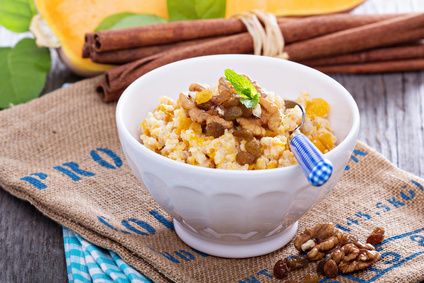When talking about cultures and traditions from around the world, it’s often their differences that tend to hog the spotlight, making it easy to forget how similar they really are. The foundation of nearly every traditional diet was built on the goodness of plant foods fruits and vegetables, whole grains, legumes, nuts, and seeds. So, while preparations vary (sometimes quite significantly) from place to place with the use of local spices, herbs, cooking methods, and plant varieties, there is a lot that’s shared in common. And it turns out, whole grains form the backbone of cuisines all over the world.
This means that regardless of where in the world you live, or where your ancestors came from, chances are that whole grains are a part of your heritage. Before refrigeration and irrigation, grains offered several practical advantages over other food groups when it came to storage and cultivation. Cereal grains can be stored at room temperature for months at a time without spoiling (which cannot be said for most fruits and vegetables), and they are easy on the environment, requiring significantly less water than many other crops. This helps explain why they’re a staple of human existence just about anywhere you look. Even today, grains remain the most important source of food worldwide, making up nearly half of all calories consumed.
Of course, the types of grains eaten in different regions vary from place to place, depending on climate and the species native or adapted to that locality. In the Mediterranean, barley, rye, and ancient wheats like emmer, farro, and spelt have made their mark, whereas Latin America is a region dominated by corn, amaranth, quinoa, and rice. The African Heritage diet is full of delicious whole grains like sorghum, millet, and tea which are all crops especially well-suited for dry climates and drought conditions. Long before white rice became so prevalent, Asian food traditions included millet, buckwheat noodles (soba), barley porridges, and of course, brown, black and red rices.
For most of human existence, whole grains rather than their refined grain counterparts have been the norm (and many of these traditional whole grain foods remain central to regional cuisines). It wasn’t until the late 1800s that new milling technology allowed the bran and germ to be quickly and efficiently separated from the endosperm giving rise to a global index of white flour and white rice. What millers and health officials didn’t immediately understand was that remaining our grains meant removing about a quarter of their protein, and one half to two thirds (and sometimes more) of a score of their other nutrients including their B vitamins and fiber. Fortunately, today we have a much better understanding of the huge health advantages of whole grains and we’re watching the momentum for whole grains spread from Latin America, to Asia, to Australia, and many places in between.
If you’re looking for a fun way to connect with your own heritage, our new Whole Grains Around the World 4-week menu plan book is a great place to start. It takes readers beyond the basics of brown rice and whole wheat sandwich bread, and offers more than 70 recipes inspired by different heritage diets: Mediterranean, African, Latin American, and Asian. Here at Oldways we like to say, let the old ways be your guide to good health. As you dig in to your own culinary past, we’d love to hear in the comments below which whole grain recipes inspire you!
Caroline Sluyter, Whole Grains Council Program Director








Leave a comment